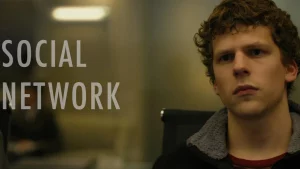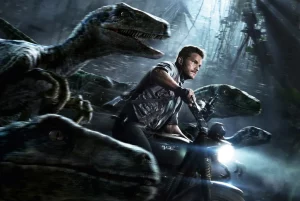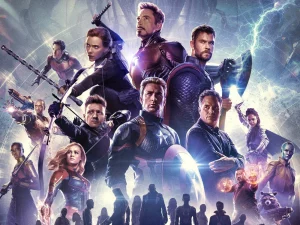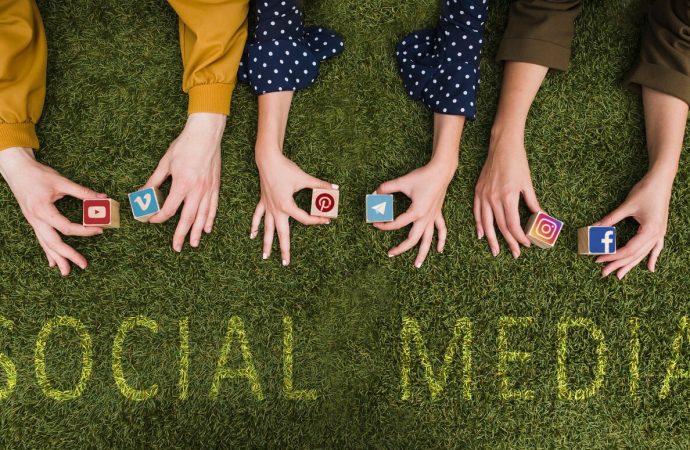Introduction In the ever-evolving landscape of digital marketing, social media has emerged as a game-changer, particularly in the realm of movie promotion. Traditional methods of releasing movie teasers and trailers have been significantly transformed by the advent of social media platforms. This shift has not only altered how studios market their films but has also
Introduction
In the ever-evolving landscape of digital marketing, social media has emerged as a game-changer, particularly in the realm of movie promotion. Traditional methods of releasing movie teasers and trailers have been significantly transformed by the advent of social media platforms. This shift has not only altered how studios market their films but has also changed how audiences engage with upcoming releases. This article delves into the intricate ways social media has redefined movie teasers and trailers, highlighting key trends and strategies that have emerged in this new era.
The Evolution of Movie Teasers and Trailers

Image by: Yandex.com
Historically, movie teasers and trailers were primarily showcased in theaters and on television. These short previews were designed to build anticipation and generate buzz for upcoming films. However, this traditional approach had its limitations, including restricted reach and high production costs.
The digital revolution brought about significant changes, with social media playing a pivotal role in this transformation. Platforms like Facebook, Twitter, Instagram, and YouTube have become essential tools for filmmakers and studios to reach a global audience instantly and cost-effectively.
The Role of FOMO (Fear of Missing Out) in Social Media Teasers
Social media plays on the human psychological phenomenon known as FOMO (Fear of Missing Out), which has become a crucial tool in promoting movie teasers and trailers. When a new teaser drops, users quickly share it across platforms, creating a sense of urgency. The use of countdowns, teaser announcements, and exclusive first looks builds anticipation. When audiences see others engaging with a teaser, they feel compelled to join the conversation to avoid being left out. This dynamic has become particularly prominent on platforms like Twitter, where trends and hashtags can make a trailer drop feel like a major cultural event.
Leveraging Data to Personalize Trailer Experiences
One of the most revolutionary changes brought about by social media is the ability to tailor movie marketing efforts using data analytics. Platforms like Facebook and YouTube allow studios to gather demographic information on viewers engaging with teasers and trailers. This data can help studios refine their messaging, target the right audience, and even adjust future content to better align with viewer preferences. For example, if a particular demographic responds positively to certain aspects of a teaser, marketers can focus more on those elements in subsequent trailers, creating a more personalized experience for each audience segment.
The Power of Social Media in Movie Marketing

Image by: Yandex.com
- Instant Global Reach
Social media platforms offer unparalleled reach, allowing studios to share movie teasers and trailers with millions of users worldwide in a matter of seconds. This instant access helps generate immediate buzz and excitement, often leading to viral marketing phenomena. - Targeted Advertising
Social media platforms provide advanced targeting options, enabling studios to reach specific demographics based on age, location, interests, and behavior. This precision targeting ensures that movie teasers and trailers are seen by the most relevant audiences, increasing the likelihood of engagement and conversion. - Interactive Engagement
Unlike traditional media, social media allows for real-time interaction between studios and audiences. Users can like, comment, share, and discuss movie teasers and trailers, creating a dynamic and interactive promotional environment. This engagement fosters a sense of community and anticipation among fans. - User-Generated Content
Social media encourages users to create and share their own content related to movie teasers and trailers. Fan-made posters, reaction videos, and discussions contribute to the overall buzz and often provide valuable insights into audience sentiment. - Influencer Partnerships
Collaborating with social media influencers has become a popular strategy for promoting movie teasers and trailers. Influencers with large followings can amplify the reach of promotional content, lending credibility and authenticity to the marketing campaign.
The Emergence of Fan-Created Content and Memes
Social media’s viral nature has led to the rise of fan-created content surrounding movie teasers. Fans often create memes, GIFs, and reaction videos based on teasers, which contribute to a movie’s visibility long after the official trailer is released. Platforms like TikTok and Instagram have become hubs for this type of content, where users remix clips from trailers or participate in viral trends linked to the film. These fan creations often generate additional excitement and serve as free promotion, extending the lifecycle of a trailer far beyond its initial release.
Cross-Platform Campaigns for Maximum Impact
To fully harness the potential of social media, movie marketers often design cross-platform campaigns that roll out teasers and trailers on multiple social media channels simultaneously. This approach ensures that the teaser reaches various audience segments who prefer different platforms. For example, while Instagram users might engage with visually driven content, Twitter users could focus on discussions, hashtags, and viral moments. By creating a cohesive marketing strategy that spans platforms, studios maximize the teaser’s reach and impact, allowing it to dominate online conversations across the digital landscape.
Case Studies: Successful Social Media Movie Teasers

Image by: Yandex.com
- Avengers Endgame
Marvel Studios leveraged social media to build unprecedented hype for Avengers Endgame. The release of the teaser trailer on platforms like YouTube and Twitter garnered millions of views within hours. The strategic use of hashtags, behind-the-scenes content, and fan engagement further amplified the excitement. - Bird Box
Netflix’s Bird Box became a cultural phenomenon, thanks in part to its social media marketing strategy. The release of the teaser trailer on platforms like Instagram and Twitter sparked widespread discussion and memes, propelling the film to viral status. - Joker
Warner Bros. utilized social media to create a buzz around Joker by releasing teaser trailers and behind-the-scenes footage on platforms like Facebook and YouTube. The film’s dark and intriguing content resonated with audiences, leading to extensive online discussions and anticipation.
The Role of Livestreams and Premiere Events
Another innovative approach made possible by social media is the use of livestreams for trailer premieres. Platforms like YouTube and Instagram Live allow studios to host live events where directors, actors, and influencers participate in launching the trailer in real-time. These events often include interactive Q&A sessions with fans, behind-the-scenes footage, and live reactions, creating a sense of exclusivity and excitement. By hosting livestreams, studios can engage their audience in the moment, fostering a deeper connection with the film while generating massive real-time exposure.
Social Media’s Influence on Post-Release Marketing
The influence of social media on movie marketing doesn’t end with the release of the teaser or trailer. Post-release marketing efforts continue to rely heavily on social platforms to sustain buzz for the film. Studios monitor fan discussions, analyze which scenes or elements resonated most, and use that information to release follow-up trailers, clips, or interviews. The ability to engage with audiences after the trailer release helps keep the conversation alive, allowing marketers to adapt their strategy in real-time. This flexibility ensures that the film stays relevant in an increasingly crowded entertainment landscape.
Challenges and Considerations

Image by: Yandex.com
While social media offers numerous advantages for promoting movie teasers and trailers, it also presents certain challenges:
- Content Saturation
The sheer volume of content on social media can make it difficult for movie teasers and trailers to stand out. Studios must create compelling and unique content to capture audience attention. - Managing Negative Feedback
Social media platforms are open forums where users can freely express their opinions. Negative feedback or backlash can quickly spread, potentially impacting the perception of a movie before its release. Studios must be prepared to manage and address such feedback effectively. - Algorithm Changes
Social media algorithms are constantly evolving, affecting the visibility of content. Studios need to stay updated with algorithm changes and adjust their strategies accordingly to ensure maximum reach and engagement.
The Power of Social Media in Building Fan Communities
One of the most powerful effects of social media on movie teasers and trailers is its ability to create and nurture fan communities. Platforms like Reddit, Twitter, and Discord have become gathering places for fans to dissect every frame of a teaser, speculate about plotlines, and share their excitement. These fan-driven communities contribute to the viral nature of teaser campaigns as users generate content, discuss theories, and spread the word to their personal networks. Studios often fuel this engagement by interacting directly with fans, acknowledging their theories, and even teasing additional content, which deepens the audience’s investment in the movie.
Social Media as a Tool for Measuring Anticipation and Adjusting Marketing
Social media also acts as a real-time barometer for measuring a film’s anticipation levels. The speed and volume of reactions, likes, shares, and comments offer a clear indication of how well a teaser or trailer is resonating with its intended audience. Marketers can gauge the success of their campaign almost instantly and use this information to tweak their approach before the film’s release. If certain scenes or characters garner particularly strong reactions, those elements can be highlighted in future promotions. This data-driven flexibility allows studios to maximize the effectiveness of their marketing strategies, ensuring they deliver content that aligns with fan expectations.
The Future of Social Media Movie Teasers

Image by: Yandex.com
As social media continues to evolve, so too will the strategies for promoting movie teasers and trailers. Emerging technologies such as virtual reality (VR) and augmented reality (AR) are likely to play a significant role in the future of movie marketing. These technologies offer immersive experiences that can enhance audience engagement and anticipation.
Additionally, the rise of new social media platforms and trends will provide fresh opportunities for studios to innovate and connect with audiences in novel ways. The key to success will lie in staying adaptable and responsive to the ever-changing digital landscape.
As social media continues to evolve, so will the way movie teasers and trailers are created and consumed. Emerging technologies like augmented reality (AR) and virtual reality (VR) are likely to play a larger role in future campaigns, offering immersive teaser experiences that go beyond traditional video formats. Platforms will also become more integrated, enabling seamless interactions across different media and allowing fans to engage with content in innovative ways. As audiences become more accustomed to personalized, interactive experiences, movie marketers will need to stay ahead of the curve, leveraging social media’s ever-expanding tools to create teaser campaigns that are not only visually compelling but also deeply engaging and community-driven
Comparative Analysis of Social Media Platforms
Different social media platforms offer unique advantages when it comes to promoting movie teasers and trailers. Below is a comparative table highlighting key features of major platforms:
| Platform | Key Feature | Audience Engagement | Example of Usage |
| YouTube | Long-form videos | High, through comments and shares | Full-length trailers, interviews |
| Visual storytelling | High, with Reels, Stories | Micro-teasers, AR filters | |
| TikTok | Short, viral content | Very high, with challenges and UGC | 15-second micro-teasers, challenges |
| Quick dissemination of content | Moderate through retweets and comments | Quick teaser drops, polls | |
| Broad audience reach | Moderate, more targeted marketing | Group-based discussions, exclusive clips |
Analysis Table of Social Media Impact on Movie Teasers and Trailers
| Aspect | Traditional Teasers/Trailers | Social Media Teasers/Trailers |
| Reach | Limited to theaters and TV | Global, instant availability |
| Audience Interaction | Minimal | High (likes, shares, comments) |
| Content Format | Standard 2-3 minute trailers | Micro-teasers, GIFs, Stories |
| Feedback | Delayed, through box office data | Real-time analytics |
| Virality Potential | Low | High, especially on platforms like TikTok |
| Influence on Final Product | Minimal | High, as feedback can influence marketing strategy |
Conclusion
Social media has undeniably redefined the way movie teasers and trailers are created, distributed, and consumed. The ability to reach global audiences instantly, engage interactively, and leverage user-generated content has revolutionized movie marketing. While challenges exist, the opportunities presented by social media are vast and continually expanding. As the digital landscape evolves, so too will the strategies for captivating and exciting audiences through movie teasers and trailers.
In this new era of social media-driven movie marketing, the possibilities are endless, and the future promises even more innovative and engaging ways to connect with audiences worldwide.
















